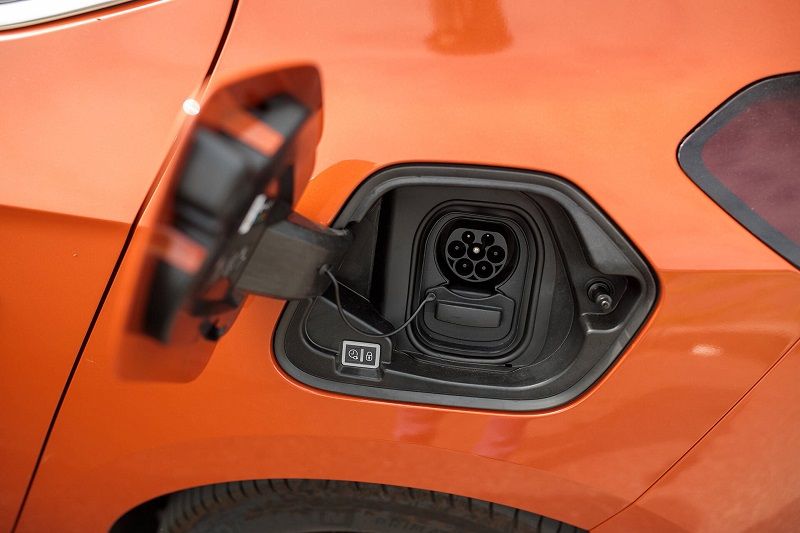Is it true that electric vehicles have zero emissions?
The process of climate change in recent years has been before everyone’s eyes for a long time: surely some of you will have heard of rising sea levels, the development of extreme weather events, or the melting of the giant icebergs of the North Pole. The ones mentioned, together with many others, are just some of the aspects and repercussions that we are experiencing with the continuous rise in the earth’s temperature, due to the increase in greenhouse gases produced by pollution.
Transport greenhouse gas emissions will have to be reduced by 90%
Greenhouse gases are elements that appear harmful to the health of our planet, such as carbon dioxide, methane, and nitrous oxide. Under the plans of the European Green Deal, which aims to achieve climate neutralityby 2050, transport greenhouse gas emissions will have to be reduced by 90% over the next thirty years. Unfortunately, the current trend seems to be heading in the opposite direction and, while some sectors have reduced the production of these gases, the transport sector has seen a marked increase.
As car engines generate a large amount of Co2, which is much higher than air transport, manufacturers, often subsidized by various governments, have decided to put several electric proposals on the market to reduce Co2 emissions and slow down climate change. Is it true that electric vehicles have zero emissions?

The fundamental difference between conventional (endothermic) cars and electrical variants lies in the type of power supply and the consequent transformation of energy. While in endothermic cars there is a chemical reaction (combustion) that releases Co2, in electric cars, there is no direct and concrete emission of carbon dioxide. However, it should be specified that the process of producing and feeding an electric car requires several steps and that this process involves, albeit to a limited extent, a certain co2 emission rate.
It is good to consider how an electric car is recharged and how the energy was created
For example, if the electricity used to charge cars came from the burning of fossil fuels, pollution would only be shifted to another stage; on the contrary, if energy were generated by hydroelectric, geothermal and solar systems, there would be no real pollution. To take a closer example, an electric vehicle produced and driven in Sweden could save up to 80% of emissions, while one in Poland would save only 25% of Co2 emissions compared to a diesel-powered car.
Suppose there is a utopian scenario in which cars are 100% powered by renewable or clean energy: would they have zero emissions? The manufacturing cycle of a car takes place through the extraction, processing, and manufacture of different raw materials necessary to build the components that will be subsequently assembled to produce and finalize the car itself. Although the manufacturing process is like the endothermic ones, the steps related to the manufacture of batteries generate an increase in emissions (“invisible”) at the disadvantage of the greener proposals.
How come? The reason is simple: rare earth (REE)
Batteries to be made need to be processed with important raw materials such as lithium, nickel, cobalt, and graphite that must necessarily be extracted below the earth’s surface. To reach the rare earth, work the materials and offer the builders a base on which to start, it is necessary to use impressive machinery that unfortunately is anything but ecological.
According to the Chinese Society of Rare Earths, for example, 75 tonnes of acid waste (which is not always managed properly) and 1 tonne of radioactive waste are also produced to produce 1 tonne of REE. In addition to the weight of REEs, the energy used to produce the batteries themselves does not come from low-carbon sources.
Despite these aspects that could discourage less accustomed users, we must point out that the impact related to the production of batteries is generally offset by 6-18 months of driving in electric mode. Electric cars, therefore, continue to be the best ecological alternative to conventional cars, even compared to hybrid and hydrogen variants.

But what happens when a battery ends its life cycle?
How are lithium-ion batteries managed when they are no longer useful for electric cars? In the conventional automotive industry, according to a study by the International Council for Clean Transport (ICCT), more than 90% of lead batteries (those of fossil fuel-powered cars) are recycled.
What about lithium-ion batteries?
Initially, due to the very specific mix of chemical components enclosed inside the cells themselves and the scarcity of electric cars circulating, the disposal process did not represent a valid opportunity for the segment. Now, with the strong growth of the sector and the increase in sales of electric cars, important developments have been made in this regard and over the next few years, we will certainly be able to better cushion the disposal of batteries, making the procedure much greener.
Meanwhile, some companies have decided to reuse batteries that no longer conform to manufacturers’ standards giving them a second life. As you may know, electric car batteries are subject to continuous reminders and charge-discharge cycles that tend, in the long run, to reduce charging capacity. In this regard, all manufacturers offer a series of years of guarantee to reassure their buyers and thus provide a high and above all adequate level of assistance.
By reusing batteries that are no longer suitable for vehicles, you get systems capable of storing electricity for use in the form of backups. With this interesting strategy, manufacturers and companies allow reducing the environmental impact related to the production of batteries, cushioning over a longer period the amount of Co2 produced.
Electric cars are a viable ecological alternative although not yet zero-emissions
In conclusion, electric cars are not yet zero-emission, but they represent a viable ecological alternative to the current endothermic thrusters which, as we know, are destined to disappear over the next few years. The electrification of road transport is therefore not a panacea for all ills but must be accompanied by appropriate measures to make it truly sustainable. It is a question of accelerating the energy transition by investing in renewable energy, also allowing vehicles to last for a long time, to cushion the additional energy required by the production process.
Sources:
ucsusa.org
theicct.org
In collaboration with:









